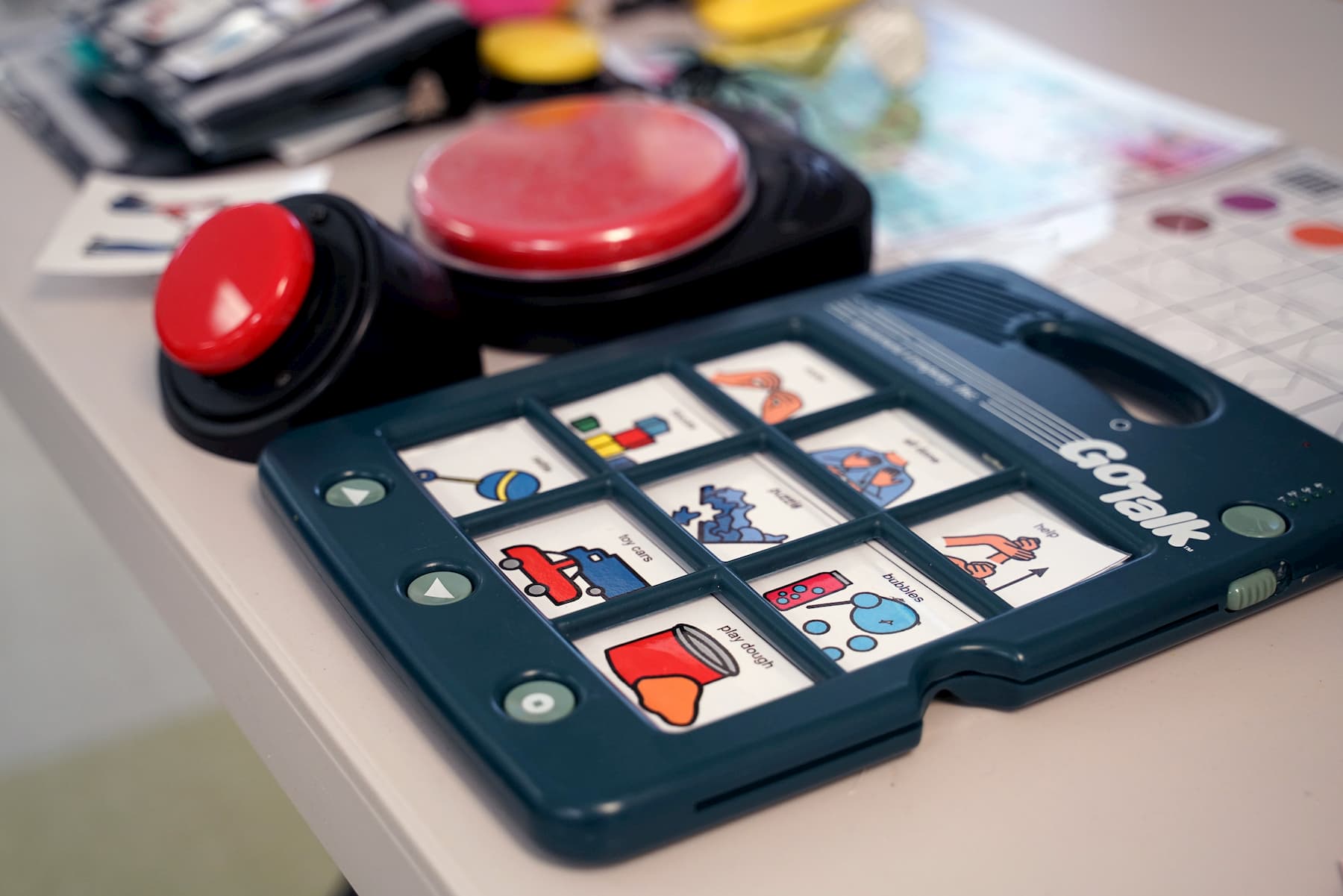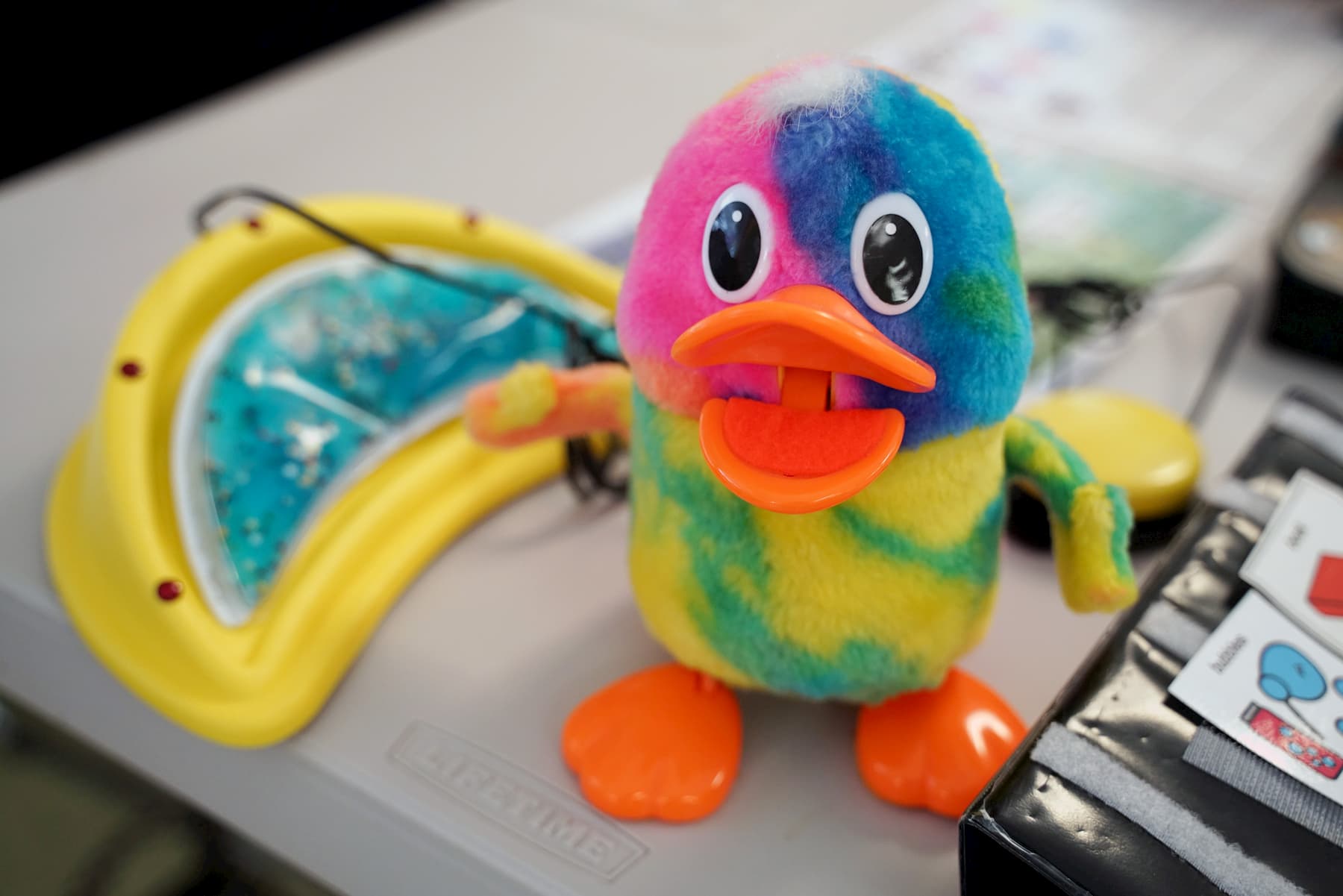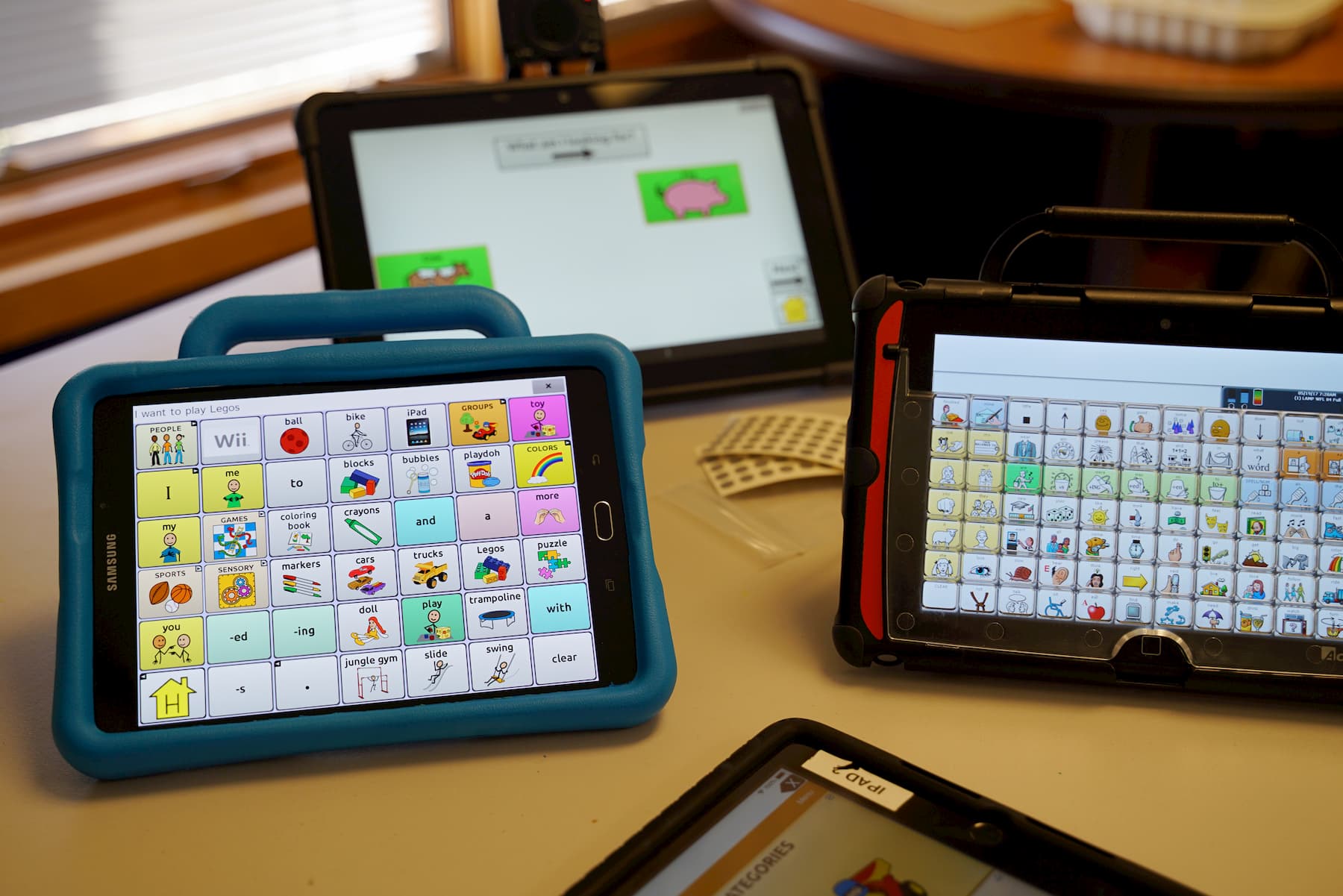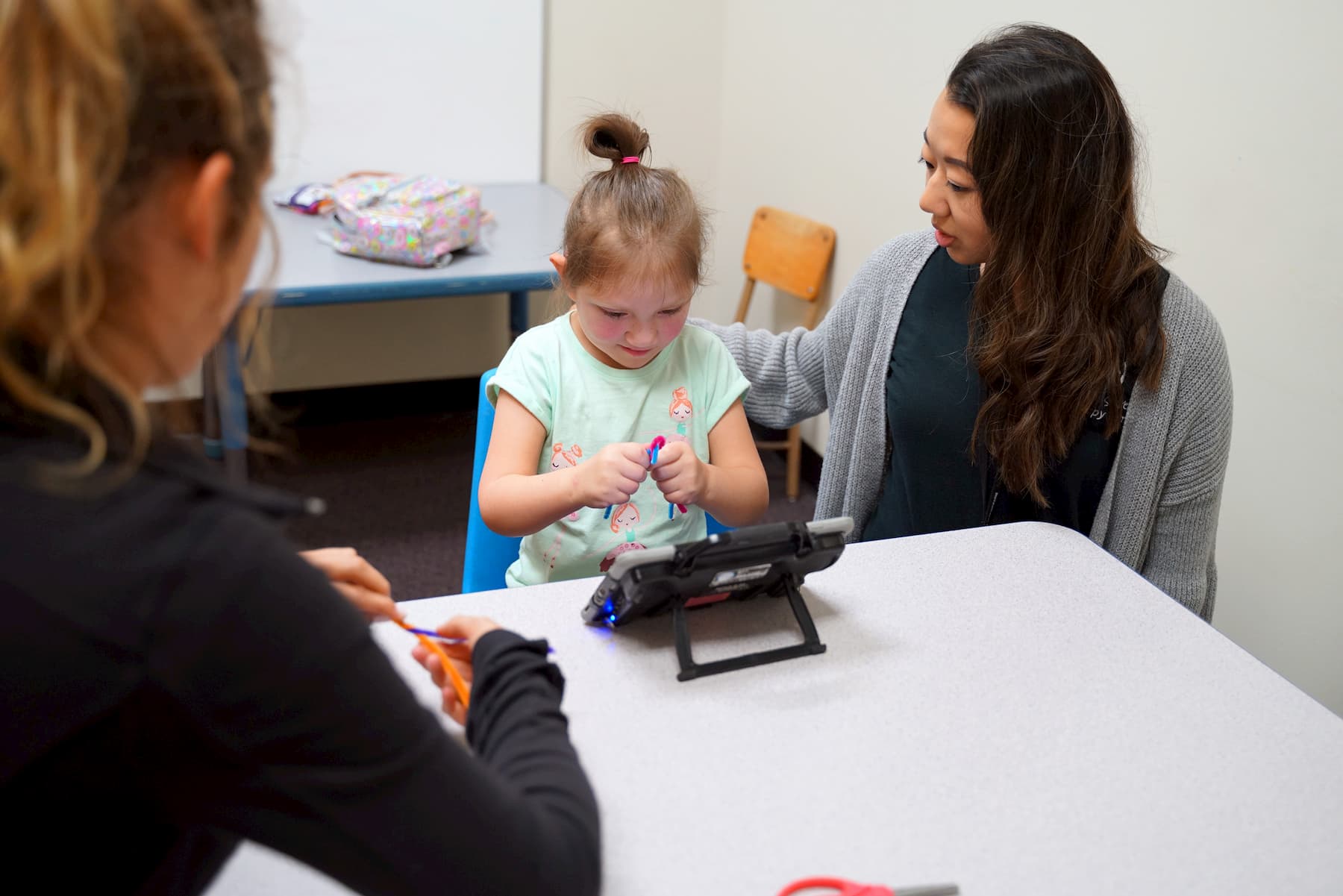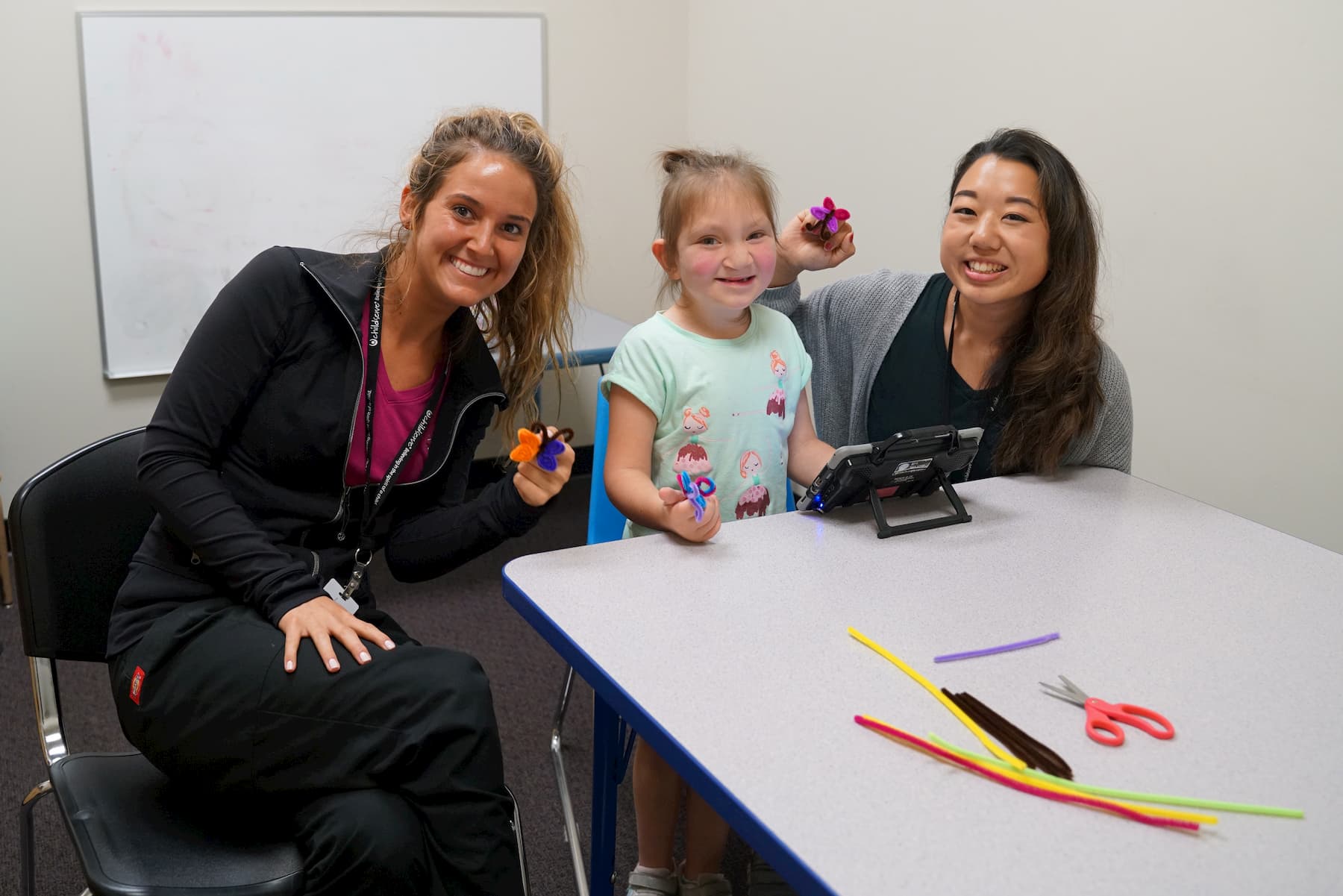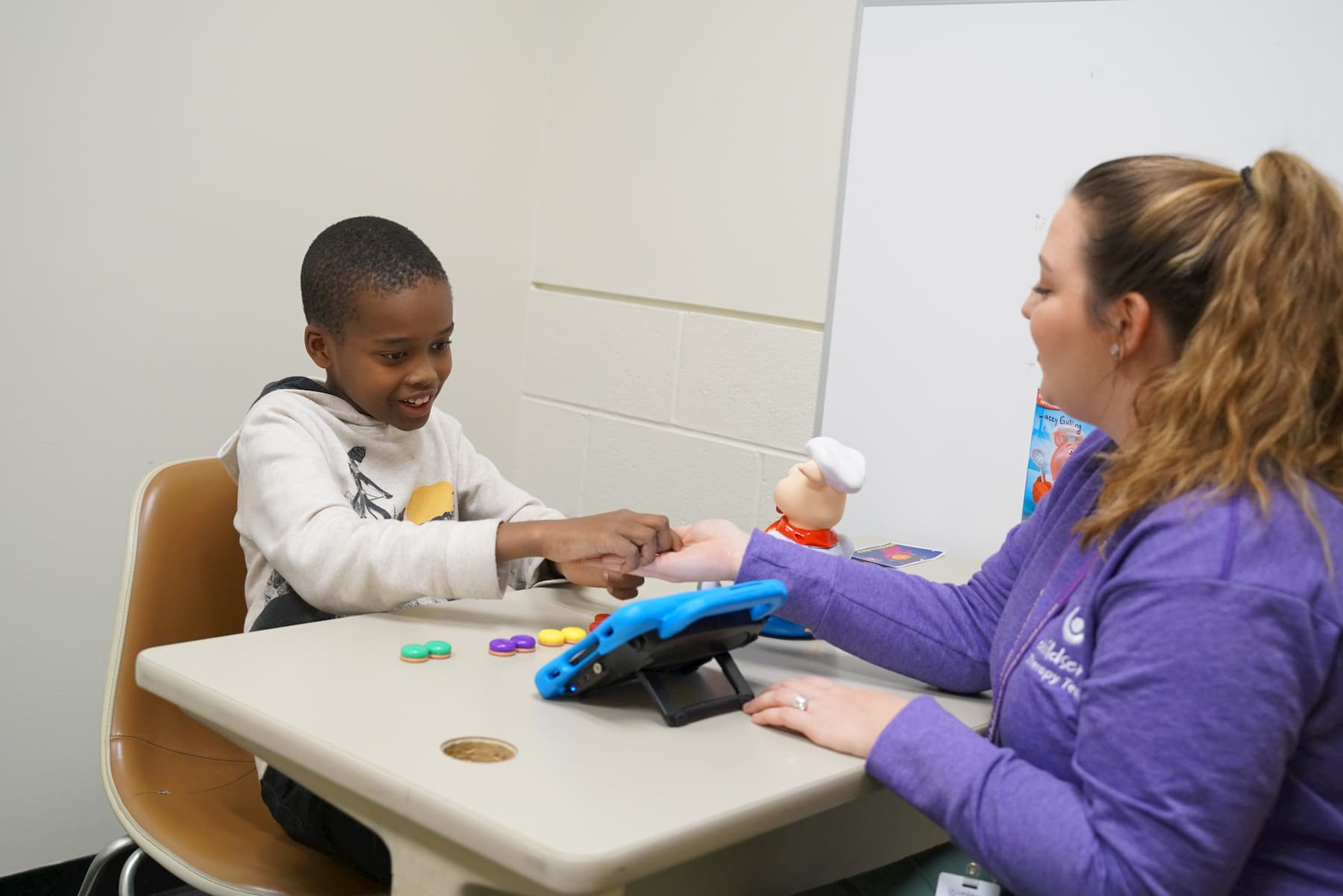
Nothing is more frustrating than having something to say, and feeling like no one will listen! Some children live with that feeling every day due to developmental delays or disabilities.
As a speech language pathologist at ChildServe, I help kids express themselves, either by teaching them tools to improve their verbal speech, or through one of my favorite parts of speech therapy called Augmentative and Alternative Communication (AAC).
AAC includes a wide range of adaptive tools like a high-tech touch screen device, a binder full of pictures for commonly used words, or a simple switch to choose between “yes” or “no,” just to name a few. AAC helps reduce a child’s frustration and often helps improve their behavior as they develop skills to share their feelings, thoughts, and opinions. It opens the door to more learning opportunities and language development.
In my experience, I have found there are three common myths people may believe about AAC:
- Myth: Using an AAC device will stop a young child from using or developing their voice.
Truth: Using a device to build communication skills often helps a child’s natural voice to develop more quickly. AAC supports their communication and acts as an aid in those moments where communication gets really difficult. Most often, when I see children learn to use an AAC tool, I find they can’t wait to communicate more and more – verbally when they’re able, or through trying out a more advanced AAC tool.
- Myth: My child can’t use an AAC device until they are school age.
Truth: Something I have heard from the adults I know who use AAC, is that they wished they’d been given access to AAC sooner. They were just waiting for someone to believe in them, and believe that they had something inside worth sharing.
Research has shown that kids as young as three years old can benefit from using adaptive and alternative communication tools. It can help improve their vocabulary and their social communication skills during the important period of early childhood when their language skills are naturally developing. Amazing results can happen when you give them a tool to be able to do express themselves in a new way.
- Myth: If my child has significant cognitive impairments or medically complex needs, they won’t be able to use AAC, or they won’t have anything to share.
Truth: Practicing communication skills through AAC actually helps influence and promote cognitive skills. It helps kids learn social skills, and it can even set a foundation for reading development.
If a child has never had access to AAC tools appropriate for their needs and had support to learn and practice, it’s not fair to assume they don’t have anything to say. At It’s important not to underestimate what another person can feel, think, or express regardless of their abilities. At ChildServe we call this, “believing in the spirit of a child.” AAC is an important way to help kids to connect with others, share our opinions, and live a great life!
About
ChildServe improves the health and well-being of nearly 5,800 children each year through specialized clinical, home, and community-based programs and services. We serve children with developmental delays, disabilities, injuries, and other special healthcare needs.
Follow Us
Contact Us
Johnston | 515-727-8750
Ames | 515-232-7220
Des Moines | 515-280-5332
Iowa City | 319-351-5437
Cedar Rapids | 319-777-7450
Links

